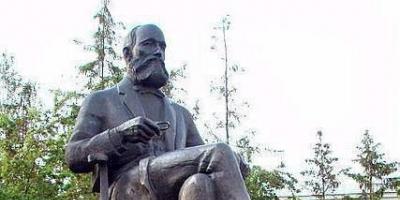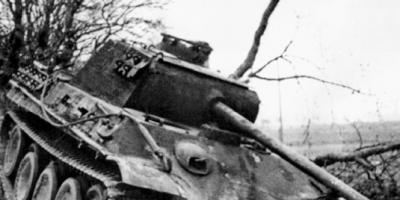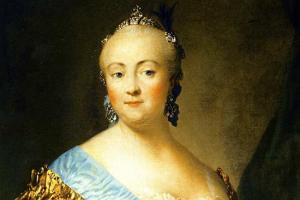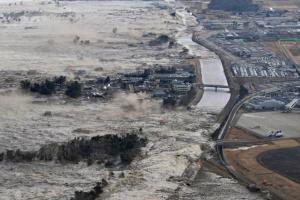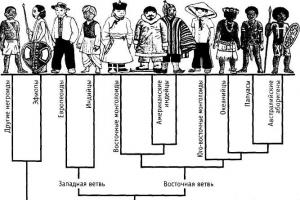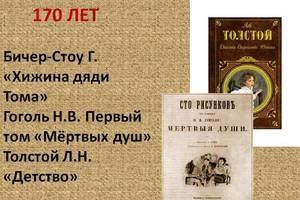The contribution to chemistry of the Russian chemist, academician of the St. Petersburg Academy of Sciences and professor at St. Petersburg University, creator of the theory of chemical structure, is presented in this article.
Butlerov Alexander Mikhailovich contribution to chemistry:
Alexander Mikhailovich in 1858 discovered a new method for the synthesis of methylene iodide. At the same time, he performed many tasks and works on its derivatives.
The chemist was able to synthesize methylene diacetate and, through the process of saponification, obtained a polymer of formaldehyde. On its basis, in 1861, Butlerov first obtained urotropine and methylenenitane, thereby carrying out the first synthesis of the sugar element.
Butlerov's contribution to the study of chemistry was fully revealed in his revealing message of 1861. In it he:
- He proved the imperfection of the theories of chemistry existing at that time.
- Emphasized the importance of atomic theory.
- Defined the concept of chemical structure.
- Formulated 8 rules for the formation of chemical compounds.
- Butlerov was the first to show the difference between the reactivity of different compounds.
Alexander Mikhailovich put forward the idea that atoms in molecules mutually influence each other. He explained in 1864 the process of isomerism in most organic compounds. In the process of experiments to benefit his idea, the scientist studied the structure of butyl tertiary alcohol and isobutylene. He also carried out the polymerization of ethylene hydrocarbons.
Butlerov's main role in chemistry is that he is the founder of the doctrine of tautomerism, laying its foundations.
Date of Birth: |
|
Place of Birth: |
Chistopol, Kazan Governorate, Russian Empire |
Date of death: |
|
A place of death: |
Butlerovka, Kazan Governorate, Russian Empire |
Russian empire |
|
Scientific field: |
|
Alma mater: |
Kazan University |
Notable students: |
V. V. Markovnikov, A. N. Popov, A. M. Zaitsev, A. E. Favorsky, M. D. Lvov, I. L. Kondakov, E. E. Vagner, D. P. Konovalov, F. M. Flavitsky, A. A. Krakau, Rubtsov P. P. |
Known as: |
Creator of the theory of the chemical structure of organic substances, founder of the “Butlerov school” |
Addresses in St. Petersburg
Scientific contribution
Pedagogical activity
Social activity
Essays
(September 3 (15), 1828, Chistopol - August 5 (17), 1886, Butlerovka village, Alekseevsky district of Tatarstan) - Russian chemist, creator of the theory of chemical structure, founder of the “Butlerov school” of Russian chemists, beekeeper and lepidopterist, public figure.
Biography
Born into the family of a landowner, a retired officer - a participant in the Patriotic War of 1812. He received his initial education at a private boarding school, and then at a gymnasium in Kazan, in 1844-1849. student of Kazan University “category of natural sciences”. From 1849 he was a teacher, from 1854 he was an extraordinary professor, and from 1857 he was an ordinary professor of chemistry at the same university. In 1860-1863 he was its rector twice. In 1868-1885 he was an ordinary professor of chemistry at St. Petersburg University. In 1885 he retired, but continued to give special courses of lectures at the university. In 1870 he was elected adjunct, in 1871 extraordinary, and in 1874 ordinary academician of the St. Petersburg Academy of Sciences. In 1878-1882 he succeeded N.N. Zinin as chairman of the Chemistry Department of the Russian Physical-Chemical Society. Honorary member of many other scientific societies in Russia and abroad.
While still a student at the boarding school, he began to be interested in chemistry: together with his comrades, they tried to make either gunpowder or “sparklers.” Once, when one of the experiments led to a strong explosion, the teacher severely punished him. For three days in a row, Sasha was taken out and put in a corner the entire time while the others were having lunch. A black board was hung around his neck with the words “Great Chemist” written on it. Subsequently, these words became prophetic. At Kazan University, Butlerov became interested in teaching chemistry, whose professors were K. K. Klaus and N. N. Zinin. From 1852, after Klaus moved to the University of Dorpat, Butlerov headed the teaching of all chemistry at Kazan University. In 1851 Butlerov defended his master's thesis “On the oxidation of organic compounds”, and in 1854 at Moscow University - his doctoral thesis “On essential oils”. During a trip abroad in 1857-1858, he became close to many prominent chemists, including F.A. Kekule and E. Erlenmeyer, and spent about six months in Paris, actively participating in meetings of the newly organized Paris Chemical Society. In Paris, in the laboratory of S. A. Wurtz, Butlerov began the first cycle of experimental research. Having discovered a new method for producing methylene iodide, Butlerov obtained and studied numerous of its derivatives; first synthesized hexamethylenetetramine (urotropine) and a polymer of formaldehyde, which, when treated with lime water, turned into a sugary substance (containing, as was established by E. Fischer, a-acrose). According to Butlerov, this is the first complete synthesis of a sugary substance.
Addresses in St. Petersburg
1870 - 08/05/1886 - 8th line, 17, apt. 2.
Scientific contribution
Key Ideas theories of chemical structure Butlerov first expressed the main provisions of his theory in a report “On the chemical structure of matter,” read in the chemical section of the Congress of German Naturalists and Doctors in Speyer (September 1861). The basics of this theory are formulated as follows:
- “Assuming that each chemical atom has only a certain and limited amount of chemical force (affinity) with which it takes part in the formation of a body, I would call chemical structure this chemical bond, or the way of mutual connection of atoms in a complex body.”
- “... the chemical nature of a complex particle is determined by the nature of its elementary constituent parts, their quantity and chemical structure”
All other provisions of the classical theory of chemical structure are directly or indirectly related to this postulate. Butlerov outlines the path for determining the chemical structure and formulates the rules that can be followed in this case. He gives preference to synthetic reactions carried out under conditions where the radicals involved in them retain their chemical structure. However, Butlerov also foresees the possibility of regroupings, believing that subsequently “general laws” will be derived for these cases as well. Leaving open the question of the preferred form of formulas of chemical structure, Butlerov spoke about their meaning: “... when the general laws of the dependence of the chemical properties of bodies on their chemical structure become known, then such a formula will be an expression of all these properties” (ibid., pp. 73-74 ).
Butlerov was the first to explain the phenomenon of isomerism by the fact that isomers are compounds that have the same elementary composition but different chemical structures. In turn, the dependence of the properties of isomers and organic compounds in general on their chemical structure is explained by the existence in them of the “mutual influence of atoms” transmitted along the bonds, as a result of which atoms, depending on their structural environment, acquire different “chemical meanings”. Butlerov himself and especially his students V.V. Markovnikov and A.N. Popov concretized this general position in the form of numerous “rules”. Already in the 20th century. these rules, like the entire concept of mutual influence of atoms, received an electronic interpretation.
Of great importance for the development of the theory of chemical structure was its experimental confirmation in the works of both Butlerov himself and his school. He foresaw and then proved the existence of positional and skeletal isomerism. Having obtained tertiary butyl alcohol, he was able to decipher its structure and proved (together with his students) the presence of isomers. In 1864, Butlerov predicted the existence of two butanes and three pentanes, and later isobutylene. In order to carry the ideas of the theory of chemical structure through all organic chemistry, Butlerov published in 1864-1866 in Kazan in 3 editions “Introduction to the complete study of organic chemistry,” 2nd ed. which was published in 1867-1868 in German.
Butlerov was the first to begin, based on the theory of chemical structure, a systematic study of polymerization, which was continued in Russia by his followers and culminated in the discovery by S. V. Lebedev of an industrial method for producing synthetic rubber.
Pedagogical activity
Butlerov’s great merit is the creation of the first Russian school of chemists. Even during his lifetime, Butlerov’s students at Kazan University V.V. Markovnikov, A.N. Popov, A.M. Zaitsev occupied professorial chairs at universities. Among Butlerov's students at St. Petersburg University, the most famous are A. E. Favorsky, M. D. Lvov and I. L. Kondakov. At different times, E. E. Vagner, D. P. Konovalov, F. M. Flavitsky, A. I. Bazarov, A. A. Krakau and other prominent Russian chemists worked as trainees in the Butlerov laboratory. A distinctive feature of Butlerov as a leader was that he taught by example - students could always observe for themselves what and how the professor was working on.
Social activity
Butlerov took a lot of energy in the struggle for recognition of the merits of Russian scientists by the Academy of Sciences. In 1882, in connection with the academic elections, Butlerov turned directly to public opinion by publishing an accusatory article in the Moscow newspaper Rus, “Russian or only the Imperial Academy of Sciences in St. Petersburg?”
Butlerov was a champion of higher education for women, participated in the organization of the Higher Women's Courses in 1878, and created the chemical laboratories of these courses. In Kazan and St. Petersburg, Butlerov gave many popular lectures, mainly on chemical and technical topics.
In addition to chemistry, Butlerov paid a lot of attention to practical issues of agriculture, gardening, beekeeping, and later also to tea cultivation in the Caucasus. He was the founder and, at first, editor-in-chief of the Russian Beekeeping List. Being one of the organizers of the Russian Society for the Acclimatization of Animals and Plants, he made a great contribution to the development of gardening and beekeeping. The book he wrote, “The Bee, Its Life and the Main Rules of Intelligent Beekeeping,” went through more than 10 reprints before the revolution, and was also published during Soviet times. Since the late 1860s. showed interest in mediumship - spiritualism.
Memory
The memory of Butlerov was perpetuated only under Soviet rule; An academic publication of his works was carried out.
- In 1953, a monument to him was unveiled in front of the building of the Faculty of Chemistry of Moscow State University.
- In Kazan there is Butlerov Street.
- In 1965, Butlerova Street appeared in Moscow.
- In St. Petersburg there is Butlerova Street.
- In Daugavpils (Latvia), in the Khimikov Village area, there is Butlerova Street.
- In Kyiv, in the area of the Khimvolokno Production Association (Darnitskaya industrial zone) there is Butlerova Street.
- In Dzerzhinsk, Nizhny Novgorod region, there is Butlerova Street
Essays
- Introduction to the complete study of organic chemistry, c. 1-3, Kazan, 1864—1866;
- Articles on beekeeping, St. Petersburg, 1891;
- Selected works on organic chemistry, M., 1951 (bib. of works on chemistry);
- Works, vol. 1-3, M., 1953-1958 (bib. of works);
- Scientific and pedagogical activities. Sat. documents, M., 1961.
Butlerov's biography, which you will read in this article, is marked by the creation of a theory. This theory still underlies the science of the nature of chemical compounds.
Butlerov’s biography begins in 1828, when Alexander Mikhailovich was born in the small village of Butlerovka, located near Kazan. This event took place on his father's estate.
Butlerov Alexander Mikhailovich: childhood
Alexander did not remember his mother, since she died 11 days after the birth of his son. His father was an educated man, and the future scientist wanted to be like him in everything. At first the boy went to a boarding school, and then began to study at the First Kazan Gymnasium. This educational institution had very experienced teachers who knew how to arouse interest in their subjects. Alexander found his studies easy, and he was especially attracted to natural sciences.
Classes at Kazan University, moving to Kazan
Contrary to his father’s wishes, after graduating from high school, Alexander Mikhailovich decided to become a student in the natural science department of the university in Kazan. A year later, in 1845, he was accepted into the first year. At this time the young man turned 17 years old.
Butlerov's biography was marked in 1846 by an unpleasant event - he fell ill with typhus. The guy miraculously survived, but his father, who became infected from him, died. Butlerov moved with his aunt to Kazan in the fall. At the university, he studied diligently, but soon noticed that what he liked most were the lectures on chemistry. He was not satisfied with the lectures of Professor Klaus, so he began to attend classes taught by Nikolai Nikolaevich Zinin. The latter, observing Alexander during laboratory work, noticed that he was gifted.
Defense of the candidate's work
To receive a candidate's degree, Alexander Mikhailovich had to submit a dissertation upon graduation. Zinin by this time had left for St. Petersburg from Kazan. Therefore, Alexander had to take up the natural sciences. He prepared an article for his candidate’s work entitled “Day butterflies of the Volga-Ural fauna.” But after some time, circumstances turned out to be such that Butlerov nevertheless returned to chemistry.
Work at Kazan University
After receiving his degree, Alexander remained to work at Klaus, the only professor of chemistry, could not conduct all the classes himself and needed an assistant, which Alexander Mikhailovich became. Butlerov passed the exams in the fall of 1850 and became a master of chemistry. He immediately began working on his doctoral dissertation on the topic of essential oils. Butlerov defended this work early next year. Simultaneously with the preparation of lectures, Alexander Mikhailovich began a thorough study
Butlerov botanist
Butlerov’s biography interests not only chemists, but also botanists. Alexander Mikhailovich conducted experiments in his greenhouses located in Butlerovka and Kazan. Also wrote articles on the topics of floriculture, gardening and agriculture Butlerov Alexander Mikhailovich. A photo of the monument to Alexander Mikhailovich, located in Kazan, near the university, is presented below.

Doctorate, travel abroad, contribution to chemistry
Butlerov received his doctorate in physics and chemistry on June 4, 1854. Immediately after this, he was appointed to the position of acting professor of chemistry at his native Kazan University. By the beginning of 1857, Butlerov was already a professor. That same year, in the summer, he received permission to go on a business trip abroad.
Alexander Mikhailovich arrived in Berlin at the end of summer. After some time, he continued traveling through Germany, Italy, Switzerland and France. Paris was the final destination of the trip. At that time it was the world center for the study of chemistry. Butlerov was attracted mainly by his meeting with Adolf Wurtz. Alexander Butlerov worked in his laboratory for 2 months. The chemist began to conduct his experiments here. After some time, his research bore first fruit. Over the next 20 years, Alexander Butlerov discovered dozens of reactions and substances. His contribution to chemistry was simply enormous. In addition, his exemplary syntheses of ethylene and ethanol, tertiary alcohols, dinzobutylene, trioxymethylene, and urotropine are at the origins of a number of industries. They had a stimulating influence on her development. As you can see, Alexander Mikhailovich Butlerov did a lot for science and industry. His achievements are difficult to overestimate. Let us now talk about the theory created by this chemist.

Butlerov's theory
Butlerov, studying hydrocarbons, realized that this is a separate class of chemicals. The scientist, analyzing their properties and structure, noticed a strict pattern that formed the basis of the theory of chemical structure created by him.
Butlerov's report at the Paris Academy of Sciences was met with interest. A lively debate began. A few years later, during his 2nd business trip abroad, Alexander Mikhailovich presented the theory he had created. He made a report at the 36th Congress of Doctors and Naturalists in Speyer, held in September 1861. Butlerov read his report on the topic “Something about the chemical structure of bodies.” The scientist introduced the audience to his new theory of the structure of organic substances. He said that every atom that is part of a body takes part in its formation and acts with forces directed towards the atoms surrounding it. It is because of this effect that atoms bond into a molecule, a chemical particle. He called chemical structure the distribution of the action of these forces, which leads to the connection of atoms. Thus, complex particles have a chemical basis, which is determined by the nature of the constituent parts, their chemical structure and quantity.

Let us note that even before Butlerov, the term “chemical structure” was encountered in the literature. However, the scientist rethought it and began to use it to define a new concept. The theory of chemical structure is the basis of all branches of modern synthetic chemistry.
Preparation of trimethylcarbinol
The happiest year in Butlerov’s life can be considered 1863. By acting on acetyl chloride with dimethylzinc, the scientist for the first time in history obtained tertiary, otherwise called trimethylcarbinol. Soon after this, reports appeared in the literature on the synthesis of butyl alcohols, primary and secondary. Isobutyl alcohol has been around since 1852. Then it was first isolated from vegetable oil. Now there could be no question of any dispute, since there were 4 butyl alcohols, each of which was an isomer. This was a real triumph for structural theory.
Tautomerism theory
The main position of the new theory put forward by Butlerov, now the reversible isomerization of tautomerism, dates back to the period from 1862 to 1865. Its author believed that its mechanism consists in the splitting of molecules with the same structure and the combination of their residues to form new molecules with a different structure. The scientist spoke about the need to apply a dynamic approach to chemical processes. In other words, they should be considered as equilibrium. The authority of Alexander Mikhailovich as the author of the theory of tautomerism was recognized even by Peter Laar, a German chemist who introduced the word “tautomerism” itself into circulation.

Chemistry textbook
Now Butlerov’s task was to apply his structural theory to all compounds and reactions of organic chemistry, and also to create a new textbook on organic chemistry. In the textbook, all phenomena should be considered through the prism of the theory created by him. Butlerov worked on its creation for almost 2 years. Alexander Mikhailovich’s book “Introduction to the Complete Study of Organic Chemistry” was published in three editions (from 1864 to 1866). It was far superior to all textbooks known at that time. Butlerov's work caused a revolution in science. Already in 1867, preparations began for the translation and publication of this book in German. Then translations appeared in other major European languages.
Holidays in Butlerovka, work at St. Petersburg University
After finishing work on the book, Alexander Mikhailovich Butlerov was increasingly on his estate. His family came here several times a week. The youngest son, Volodya, who was 2 years old, loved to play in the meadow located near the house. Butlerov Alexander Mikhailovich also loved to relax here. Interesting facts about him include his passion for growing flowers, as well as the creation of a collection of insects.
Butlerov now spent less time in the laboratory, but followed the discoveries of scientists. On the initiative of Mendeleev, in the spring of 1868, Alexander was invited to work at St. Petersburg University. Here he began to give lectures and also organized his own chemical laboratory. The scientist created a new teaching method. He proposed a laboratory workshop, now accepted everywhere. During classes, students learned to work with chemical equipment.

Obtaining isobutylene
Butlerov continued his research in which he developed the structural theory. He wanted to prove that all types of organic compounds can have straight and branched carbon chains. This assumption followed from his theory. However, it was necessary to prove this in practice. Finally, the efforts of Alexander Mikhailovich were crowned with success. He received the long-awaited isobutylene. Thus, the presence of a branched hydrocarbon chain was proven.
Involvement in the public life of St. Petersburg
Butlerov, in addition to being actively involved in the public life of the Russian capital. The progressive public of that time was especially concerned about the issue of female education. It was necessary for women to gain access to higher education. For this purpose, Higher Women's Courses were created at the Medical-Surgical Academy. In addition, the Bestuzhev Women's Courses were organized, at which Alexander Mikhailovich gave his lectures on chemistry.
Membership in the Academy of Sciences
The activities of this scientist were noted by the Academy of Sciences. Butlerov was elected an extraordinary academician in 1871, and 3 years later - an ordinary one. Thanks to this, he received an apartment in a building owned by the academy. Zinin Nikolai Nikolaevich also lived here. The long-standing friendship with him was further strengthened by the close proximity.
last years of life
The life and work of Alexander Butlerov until recent years were connected with science. However, the years passed, and classes with students became too difficult for Butlerov. The scientist decided to leave the university. He gave a farewell lecture on April 4, 1880. This decision was met with deep sorrow. It is known that the academic council asked Alexander Mikhailovich to stay. He was elected for another 5 years.

Butlerov limited his activities at the university as much as possible. He taught only the main course and conducted classes in the laboratory several times a week. On August 5, 1886, Alexander Mikhailovich Butlerov died from blockage of blood vessels. A photo of the chapel at Butlerov’s grave is presented above.
Great scientists who made a significant contribution to the development of chemistry Tatyana Gennadievna Frolova, teacher of chemistry and biology, Municipal Educational Institution Ilyinskaya Secondary School, Krasnogorsk district, Moscow region 2011
Dmitry Ivanovich Mendeleev Born in Tobolsk in the family of a gymnasium director. After graduating from high school, he entered the Main Pedagogical Institute in St. Petersburg, from which he graduated with a gold medal. As a student he published his first scientific research. He worked as a senior teacher at the Simferopol gymnasium, and then at the gymnasium at the Richelieu Lyceum in Odessa. After defending his dissertation, he lectures to students and conducts practical classes. 1834 - 1907 One of the world's greatest scientists and brilliant chemists of the 19th century.
After returning to Russia, he was elected professor at St. Petersburg University, where he conducted scientific and pedagogical work for 23 years. Mendeleev's largest works include: research in the field of the physico-chemical nature of solutions, the state of gases; hydration theory of solutions (which is still relevant today). He is the author of fundamental research on chemical technology, physics, metrology, aeronautics, agriculture, economics, and education. He attached particular importance to the use of oil as a raw material for the production of various chemical products. Found the general equation of state of an ideal gas (Cliperon-Mendeleev equation). He took part in the development of smokeless gunpowder. In April 1859, Mendeleev left for Germany on a scientific trip. In Heidelberg he studied capillary phenomena, met prominent scientists, and took part in the Chemical Congress.
He is the author of the first Russian textbook “Organic Chemistry” and the book “Fundamentals of Chemistry.” For outstanding achievements in science, D.I. Mendeleev was elected an honorary member of many foreign academies of sciences and scientific societies. He was the initiator of the creation of the Russian Chemical Society (now the Russian Chemical Society named after Dmitry Ivanovich Mendeleev), the organizer and first director of the Main Chamber of Weights and Measures (the institute is named after him). The periodic system is laid out on the wall of the Institute of Metrology. In 1869 he discovered the periodic law and created the periodic system. Predicted and described the properties of some elements. In recognition of the priority of the great Russian chemist Dmitri Mendeleev, the element with the serial number 101 Md was named mendeleevium.
Jens Jacob Berzelius 1779 - 1848 Swedish chemist and mineralogist. Studied chemistry in Uppsala. Compiled a table of relative masses (relative to oxygen). Contributed to the development of atomic doctrine. He created the electrochemical theory of chemical bonds and, on its basis, built a classification of elements, compounds, and minerals. He developed a system of chemical symbolism that is still used today. Created the first theory of the structure of matter. Discovered cerium, selenium, silicon, zirconium, tantalum, vanadium. He published a textbook in three volumes, which went through five editions.
John Dalton 1766 - 1844 An outstanding English chemist and physicist was born into a poor family in Eaglestfeld. I received my education on my own. The founder of atomic concepts in chemistry. For the first time he introduced the concept of “atomic weight” and compiled a table of relative atomic and molecular masses, taking the atomic mass of hydrogen as one. Determined the relative molecular weights of water, ammonia, sulfuric acid, etc. Introduced the symbols of elements and formulas of compounds into chemistry. Theoretically discovered the law of multiple ratios. He put forward and substantiated the theory of atomic structure. He discovered that humans are immune to individual colors, “color blindness,” from which he himself suffered.
Antoine Laurent Lavoisier 1743 - 1794 French chemist. Born into a wealthy family, he received a liberal arts education. He showed a great inclination to study natural sciences. He created a laboratory at his own expense. One of the creators of scientific chemistry, considered it an experimental science. He proved the complexity of the composition of air and water. Correctly explained the processes of combustion, roasting of metals and respiration with the participation of oxygen in them. Laid the foundations of organic analysis and thermochemistry. Member of the Paris Academy of Sciences Lavoisier's life ended tragically. Being a supporter of the constitutional monarchy, he was executed during the French Revolution.
Joseph Priestley English chemist and philosopher, one of the most prominent scientists of the 18th century. Received philological and theological education at the Academy in Deventry. A supporter of the Great French Revolution, for which he was persecuted, and therefore emigrated to the USA. Honorary member of the St. Petersburg Academy of Sciences. Priestley's research in chemistry laid the foundations for the science of gases. He studied carbon dioxide, was the first to obtain ammonia, hydrogen chloride, nitric oxide (1), and discovered oxygen. He showed that plants “correct” the air. 1733 - 1804
Michael Faraday English chemist and physicist. Born in London. I studied on my own. Laboratory director and professor at the Royal Institution in London. Honorary member of the St. Petersburg Academy of Sciences. He was engaged in chemical analysis of limestone, studied iron alloys, obtained liquid chlorine, hydrogen sulfide, ammonia, and discovered benzene. Pioneer and researcher of catalytic reactions. Discovered the phenomena of electromagnetic induction. Discovered the chemical effect of electric current. Established quantitative laws of electrolysis. Discovered para- and diamagnetism. Introduced the concepts of electric and magnetic fields 1791 - 1867
Karl Wilhelm Scheele Swedish chemist, member of the Royal Swedish Academy of Sciences. Pharmacist by education and profession. He worked in pharmacies in various cities in Sweden, where he conducted chemical research. Received chlorine, glycerin, molybdenum and tungsten anhydrides. He discovered hydrogen fluoride, silicon tetrafluoride, barium oxide, and a number of acids: tartaric, oxalic, lactic, hydrocyanic, etc. He discovered the ability of freshly calcined charcoal to absorb gases. Researched minerals. The mineral scheelite CaWO4 is named in his honor. 1742- 1786
Henry Cavendish 1731 - 1810 Born in Nice, graduated from Cambridge University. He was engaged in research in the field of physics, enriching chemistry with information of fundamental importance. Established the basic composition of the air. By burning hydrogen he obtained water, determining the ratio of the volumes of gases interacting in this reaction. I observed that when an electric spark acts on moist air, nitric acid is formed. In the field of physics he anticipated later discoveries. A physics laboratory at the University of Cambridge is named after Cavendish.
Russian chemist. He studied the theory of the chemical structure of organic compounds. He predicted and explained the isomerism of a number of organic compounds: two isomeric butanes, three pentanes and aliphatic alcohols (up to amyl alcohols). He wrote the first manual in the history of science based on the theory of chemical structure - “Introduction to the complete study of organic chemistry.” Alexander Mikhailovich Butlerov 1828 -1886
Vladimir Vasilievich Markovnikov Russian chemist, worked in the field of organic chemistry. He studied the mutual influence of atoms in organic substances, the directions of substitution, elimination, addition at a double bond and isomerization reactions depending on the chemical structure (Markovnikov's rules). He studied the composition of oil. Discovered a new class of organic compounds - naphthenes. He made a huge contribution to the development of chemical research and teaching of chemistry at the university. One of the organizers of the Russian Chemical Society 1837-1904
An outstanding Russian organic chemist, academician of the St. Petersburg Academy of Sciences, first president of the Russian Physical and Chemical Society. Preparation of aniline by the action of hydrogen on nitrobenzene Discovered the “Benzidine rearrangement” (rearrangement of hydrazobenzene under the action of acids) Nikolai Nikolaevich Zinin 1812 -1880
Nikolai Dmitrievich Zelinsky Soviet organic chemist, academician of the USSR Academy of Sciences (1929), one of the founders of the doctrine of organic catalysis. Created a gas mask (jointly with A. Kumant) Dealt with the hydrolysis of proteins in an autoclave, establishing their amino acid composition Created a large school of scientists who made fundamental contributions to various fields of chemistry. 1861 - 1953
Butlerov Alexander Mikhailovich (1828-1886), Russian chemist, creator of the theory of the chemical structure of substances.
Born on September 15, 1828 in the city of Chistopol, Kazan province, into a noble family (in the 17th century, Butlerov’s ancestors owned large plots of land near Kazan).
In 1844 he entered Kazan University. Butlerov’s scientific career as a whole developed successfully. Just eight years later, the university graduate became an ordinary professor and in 1857-1858. was sent abroad (Germany, Switzerland, Italy, France, England, Czech Republic). There Butlerov became directly acquainted with new ideas in chemistry. But the main thing for him was visiting laboratories and meeting the largest chemists in the West.
Returning to Russia, the scientist began refurbishment of the chemical laboratory. Then he carried out a series of experimental works, during which the world's first complete synthesis of a sugary substance was carried out (Butlerov called this compound methylenenitane).
Butlerov's second trip abroad became a turning point in the development of all organic chemistry. Speaking at the 36th Congress of German Naturalists and Physicians in Speyer (1861), the scientist first outlined the main provisions of his theory of chemical structure in his report “Something about the chemical structure of bodies.” According to it, the chemical behavior of molecules depends on their topology (sequence of connection of atoms), the mutual influence of atoms and the inequality of chemical bonds between atoms in the molecule.
In 1864, Butlerov’s monograph “Introduction to the Complete Study of Organic Chemistry” appeared - the first guide based on the theory of chemical structure. The work had a profound impact on the development of chemistry throughout the world. Butlerov's theory of chemical structure serves as the foundation of modern organic chemistry. In 1869, the scientist moved to St. Petersburg, where he continued his experimental, theoretical and pedagogical activities.
In 1852-1862. in Kazan and St. Petersburg he gave public lectures on chemistry.
In 1870, Butlerov took part in the organization of St. Petersburg and Vladimir women's courses, where he began giving lectures on chemistry. In 1880, Butlerov began lecturing at the Bestuzhev Women's Courses and set up a chemical laboratory here.

